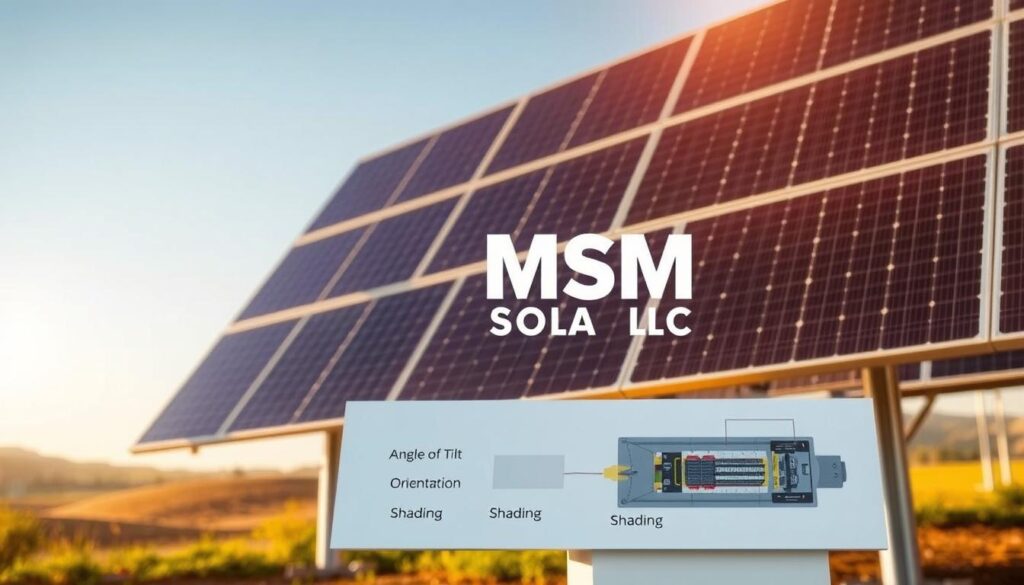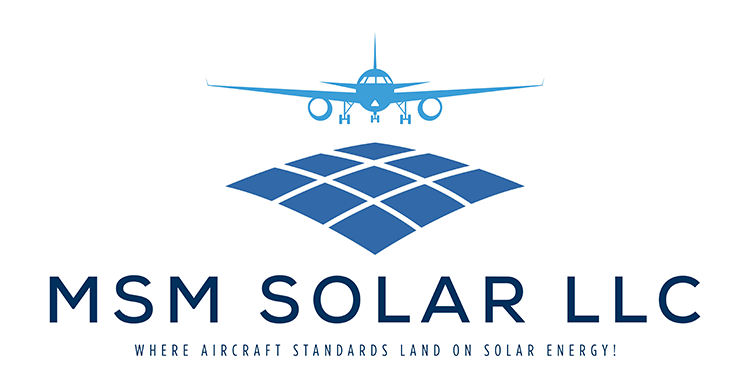When it comes to maximizing energy production, the direction of your system plays a crucial role. As Florida’s trusted provider, MSM Solar specializes in helping homeowners optimize their setup for the best results. I’ve seen firsthand how the right placement can make a significant difference.
In the northern hemisphere, south-facing panels receive the most direct sunlight. This orientation can capture 8-30% more energy compared to other directions. However, alternative setups with battery storage can also be effective, especially in Florida’s unique climate.
At MSM Solar, we use UL-listed components and wind-resistant mounting systems designed for Florida’s weather. Our NABCEP-certified team ensures your system is built to last, backed by a 25-year warranty. Real-time monitoring guarantees you always meet your energy goals.
Financial incentives and time-of-use plans further enhance the benefits of a well-placed system. Whether you’re looking to install solar panels or optimize an existing setup, MSM Solar is here to guide you every step of the way.
Find Us Here:
Key Takeaways
- South-facing panels capture the most sunlight in the northern hemisphere.
- Proper direction can increase energy production by 8-30%.
- Florida’s climate and latitude influence ideal panel placement.
- MSM Solar uses UL-listed, hurricane-rated components for durability.
- Real-time monitoring ensures consistent energy production.
- Financial incentives and battery storage can enhance system efficiency.
- MSM Solar offers a 25-year warranty and NABCEP-certified expertise.
Why Solar Panels Should Face South for Maximum Efficiency
The efficiency of your energy system heavily depends on its orientation. In the northern hemisphere, south-facing setups capture the most sunlight throughout the year. This simple adjustment can make a big difference in your energy production.
The Science Behind South-Facing Solar Panels
Earth’s 23.4° axial tilt ensures consistent southern exposure in Florida. This means panels facing south receive the most direct sunlight. PV cells absorb 33% of sunlight energy when perpendicular to the sun’s rays, making this orientation ideal.
For example, a Pensacola client saw a 20% increase in energy output after switching to a south-facing array. This real-world data highlights the importance of proper placement.
How the Sun’s Path Impacts Energy Production
The sun’s path varies throughout the year, but it generally arcs across the southern sky. Panels at a 30-40° tilt, aligned with Florida’s latitude, outperform flat installations. This setup ensures maximum sunlight absorption, even during winter months.
Morning fog on the Emerald Coast can reduce efficiency for east-facing setups. South-facing panels avoid this issue, capturing sunlight consistently throughout the day.
Comparing South vs. Other Directions: Efficiency Losses
South-facing setups produce 100% of their potential energy. In contrast, west and east-facing panels yield only 85%, while north-facing panels drop to 70%. These differences add up over time, impacting your electricity savings.
At MSM Solar, we use Aurora Solar software to model sun paths for each unique roof. Our NABCEP-certified team ensures your system is optimized for your specific location and needs.
Alternatives to South-Facing Solar Panels
Not every home requires the same setup to maximize efficiency. While south-facing systems are ideal for capturing sunlight, other directions can be just as effective, depending on your needs. Let’s explore how west and east-facing setups can optimize your energy production.
West-Facing Panels: Ideal for Time-of-Use Savings
West-facing systems shine during peak hours, typically from 3 pm to 9 pm. This orientation generates 50% more electricity during these times compared to south-facing setups. For homeowners on time-of-use (TOU) plans, this can lead to significant savings.
Take the example of a family in Tallahassee. By installing west-facing panels and switching to FPL’s TOU plan, they reduced their monthly bills by 40%. Even though total energy production is slightly lower, the financial benefits during peak hours make this setup a smart choice.
East-Facing Panels: Balancing Morning Sunlight
East-facing systems are perfect for capturing morning sunlight. This orientation works well for homes with high energy use in the early hours, such as those with electric vehicles (EVs) charging overnight. Pairing east-facing arrays with EV charging schedules ensures your car is ready to go without straining your grid.
I recently helped a restaurant in Panama City Beach optimize their breakfast shift power. By leveraging east exposure, they significantly reduced their morning energy costs. This setup proves that alternative directions can be tailored to specific needs.
For those with south-facing systems, battery storage can shift energy production to peak hours with 92% efficiency. This ensures you get the most out of your setup, no matter the direction. At MSM Solar, we offer $0 down financing and expert guidance to help you choose the best orientation for your home.
Factors Affecting Solar Panel Performance
Several key elements determine how well your system performs over time. From the angle of your roof to the local climate, each factor plays a role in maximizing energy production. Let’s dive into the details to help you get the most out of your setup.

Roof Pitch and Angle: Finding the Sweet Spot
The angle of your roof significantly impacts energy output. For example, a 5/12 pitch may lose up to 15% efficiency compared to a 7/12 pitch. I’ve seen this firsthand in local case studies where homeowners adjusted their roof angles to optimize performance.
Using MSM’s tilt calculator, we determined that a 33° angle is ideal for Panama City’s 30.2° latitude. This ensures panels capture the most sunlight throughout the year. Even small adjustments can make a big difference in your system’s output.
How Your Latitude Influences Panel Tilt
Your location’s latitude directly affects the ideal tilt for your setup. In the South U.S., a 30-40° angle is recommended for maximum efficiency. This alignment ensures panels are perpendicular to the sun’s rays, boosting power generation.
For homes with steep roofs, our proprietary cleaning drones make maintenance easier. These tools help keep panels free of debris, ensuring consistent performance year-round.
Hurricane and Wind Resistance for Florida Homes
Living in Florida means preparing for extreme weather. Our hurricane-rated mounting systems are tested to withstand winds up to 185 mph. This durability gives homeowners peace of mind during storm season.
We also use aluminum rail systems to prevent saltwater corrosion, a common issue in coastal areas. These materials ensure your installation remains sturdy and efficient for decades.
For homes with unsuitable roofs, ground-mount solutions are a great alternative. Our 3D rendering examples help visualize the best setup for your property, ensuring you get the most out of your investment.
Financial and Environmental Benefits of Optimal Placement
Investing in the right placement for your setup can unlock significant financial and environmental rewards. A well-positioned system not only maximizes your energy output but also ensures long-term savings and sustainability. Let’s explore how proper placement can benefit your property and the planet.

Maximizing the 30% Federal Solar Tax Credit
The 30% federal tax credit is a game-changer for homeowners. This incentive applies to the total cost of your installation, including MSM’s hurricane-resistant mounting systems. For example, a $20,000 system could save you $6,000 upfront, reducing your payback period significantly.
Our clients often see a 25-year savings projection that’s 20% higher with south-facing arrays compared to west-facing setups. This financial advantage, combined with the tax credit, makes the investment even more appealing.
Net Metering and Energy Independence
Net metering allows you to earn credits for excess electricity your system produces. In Florida, FPL’s net metering policies can offset up to 95% of your monthly bill. One of our clients in Tampa saw their export credits cover nearly their entire bill, thanks to an optimized south-facing setup.
Optimal placement reduces the payback period by an average of 2.7 years. This means you start enjoying pure savings sooner, while also contributing to a cleaner environment.
At MSM Solar, we stand by our production guarantee. If your system underperforms, we’ll write you a check. This commitment ensures you get the most out of your investment.
Additionally, south-facing arrays neutralize an average of 4.2 tons of CO2 annually. This environmental impact, combined with financial savings, makes proper placement a win-win for your home and the planet.
Conclusion: Trust MSM Solar for Your Custom Solar Solution
Choosing the right setup for your home’s energy needs can make all the difference. At MSM Solar, we’ve developed a 47-point installation checklist over 12 years in the Panhandle. This ensures every detail is perfect for your property.
We stand by our work with a 25-year warranty covering parts, labor, and weather damage. Our system is built to last, even in Florida’s toughest conditions. Join our Solar Savings Club for exclusive inverter upgrade deals.
Book a consultation today and receive a free drone roof analysis, a $299 value. One of our Navarre clients shared how their array survived Hurricane Sally without a scratch. That’s the peace of mind we offer.
Ready to optimize your energy setup? Let us provide a personalized direction analysis using historical weather data. Trust MSM Solar to guide you every step of the way.




